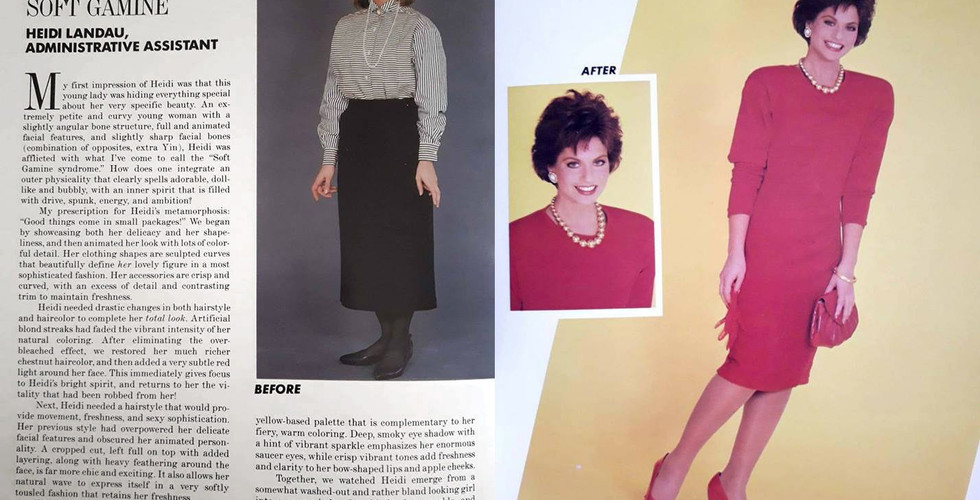Kibbe/Larson Types and Personal Style
- Sophia Kathermes

- Oct 7
- 3 min read
Because my blog's readership is generally sophisticated, I often get questions about the correlation between the stylistic tools I use in my analyses and David Kibbee's personality types (and, by extension, D. Larson's, since her personality types are based on Kibbee's). I'd like to explore this topic in detail in today's article.
So, what is the essence of kibby types?

Their essence lies in the linearity and composition of the figure and face, as well as the principle of similarity. You analyze the appearance and make recommendations. Wide for wide, long for long, short for short, thin for thin, large for large, small for small, circle for circle, corner for corner. That's basically it.
But if Mr. Kibby had stopped there, his system would never have become popular—few would have been able to understand it on their own. To make recommendations easier, he combines the physical characteristics he's found in various proportions, arriving at 13 combinations (he adds and subtracts some, but that's the basic idea). He could have stopped at this point, and still missed out on reaching a wider audience. Next, he takes a step that, as practice shows, confuses many people: he engages in imaginative thinking, gives each combination a poetic name, and attributes them to characteristics unrelated to the composition of appearance. In essence, he creates a fusion of facial and body type, body type, body composition, height, weight distribution, and the Image Type, which is close in meaning to his definition of "essence," i.e., sex appeal, a type of attractiveness.
Spreads from D. Kibbie's "Metamorphoses." Don't be alarmed, the book was published in the 1980s.
All this seems very tempting and quite accessible, but only at first glance. When trying to "fit into a type," many people suffer from cognitive dissonance, as Kibbe's system doesn't allow for mixing types, and yet there are many required matching characteristics. Yes, the maestro himself and his adherents claim that linearity is primary, but experience shows that the harmonious image created is not so easy to "unsee." As a result, these unfortunate people are forced either to wander in circles within their mental trap or to layer a specific type with so many nuances that little remains of the author's original intent.
The situation with Larson's system is even more dire, since her types encompass both hormonal balance and personality, and Dvin Larson herself hasn't published any recommendations for them: everything that stylists "working according to Larson" sell is either Kibbe's recommendations for types, or Kibbe's recommendations plus her own tweaks.
However, these conclusions don't mean the Kibbe system is useless. It is extremely useful and convenient, but only for those lucky enough to qualify for the title of "one of the thirteen." In my experience, I've only encountered one such person, and for him, Kibbe's recommendations were truly a great help.
For those who remain "out of place" (assuming they desire to create a harmonious image for themselves), there is only one option: to join the ranks of those seeking a personal style. There are countless combinations, taking into account linearity, body type, vertical proportions, color type, Image type (or a mixture of them), and archetypes. The process of finding your own unique style is quite exciting, and a personalized result without additional tricks ultimately significantly simplifies the relationship with your own appearance.

Thanks to those who are already with me on this path. ♥
Peace between the outer and inner to each and everyone!
Thank you for your trust, and until next time!































Comments